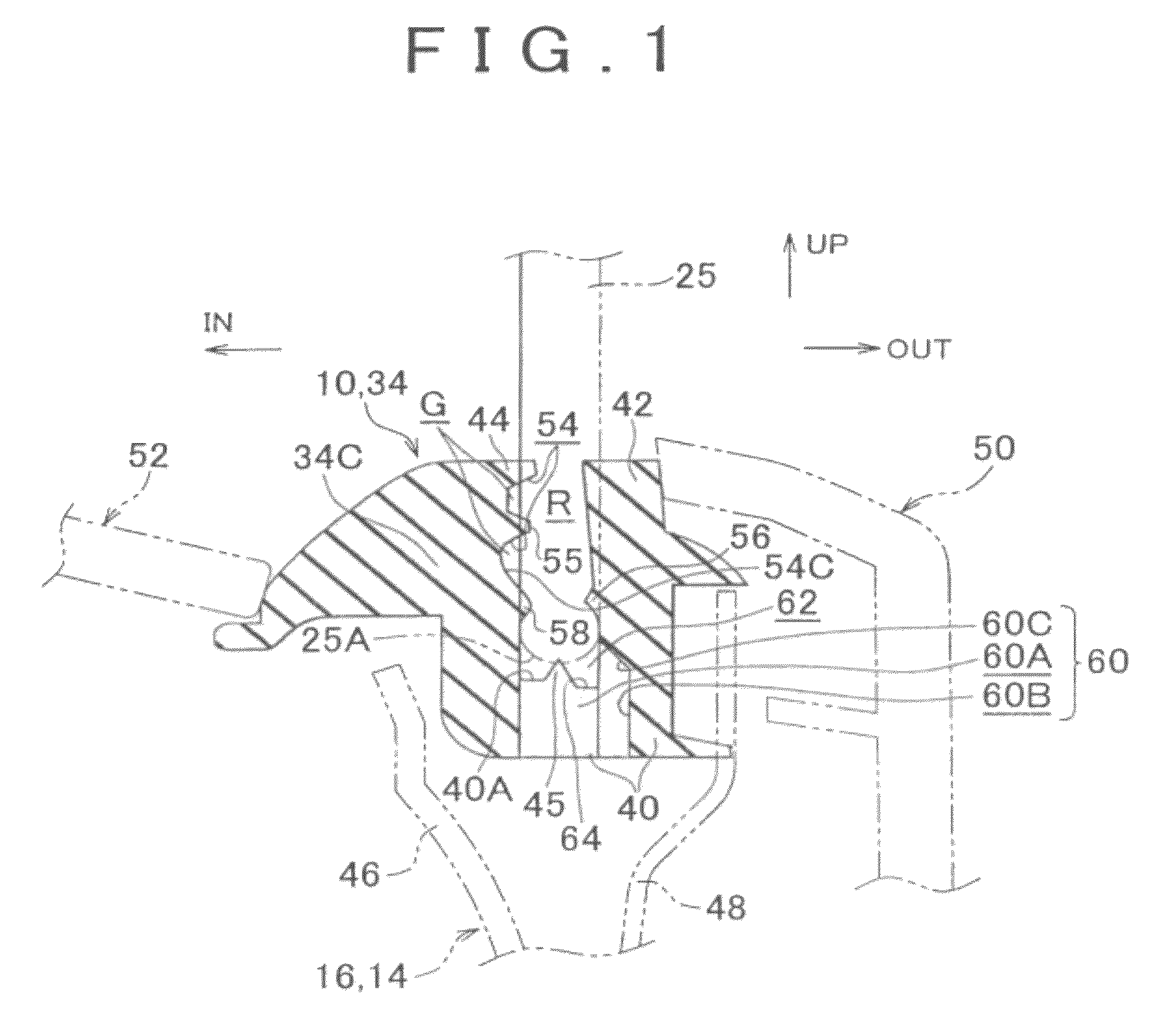Weather strip structure
a weather strip and structure technology, applied in the field of weather strip structure, can solve the problems of limiting the ability to increase the degree of sealing and achieve the effect of preventing water from entering the inside, increasing the sealing pressure against the window glass, and increasing the degree of sealing the water entry channel between the weather strip and the window glass
- Summary
- Abstract
- Description
- Claims
- Application Information
AI Technical Summary
Benefits of technology
Problems solved by technology
Method used
Image
Examples
Embodiment Construction
[0026]Referring now to the drawings, like reference numerals are utilized to designate identical or corresponding parts throughout the several views.
[0027]A weather strip 10 which includes a weather strip structure according to an example of an embodiment of the invention will be described with reference to FIGS. 1 to 5. The arrow FR (FIGS. 3 and 5) drawn in the figures as appropriate indicates the forward direction of the longitudinal (travel) directions with respect to a vehicle body of an automobile A. The arrow UP indicates the upward direction of the height directions with respect to the vehicle body. The arrow IN indicates the inward direction along the vehicle width direction, and the arrow OUT indicates the outward direction along the vehicle width direction.
[0028]In FIG. 5, a schematic overall configuration of the automobile A in which the weather strip 10 is used is shown in side view. As shown in this figure, the automobile A has side doors 14 for closing openings 12 thro...
PUM
 Login to View More
Login to View More Abstract
Description
Claims
Application Information
 Login to View More
Login to View More - R&D
- Intellectual Property
- Life Sciences
- Materials
- Tech Scout
- Unparalleled Data Quality
- Higher Quality Content
- 60% Fewer Hallucinations
Browse by: Latest US Patents, China's latest patents, Technical Efficacy Thesaurus, Application Domain, Technology Topic, Popular Technical Reports.
© 2025 PatSnap. All rights reserved.Legal|Privacy policy|Modern Slavery Act Transparency Statement|Sitemap|About US| Contact US: help@patsnap.com



